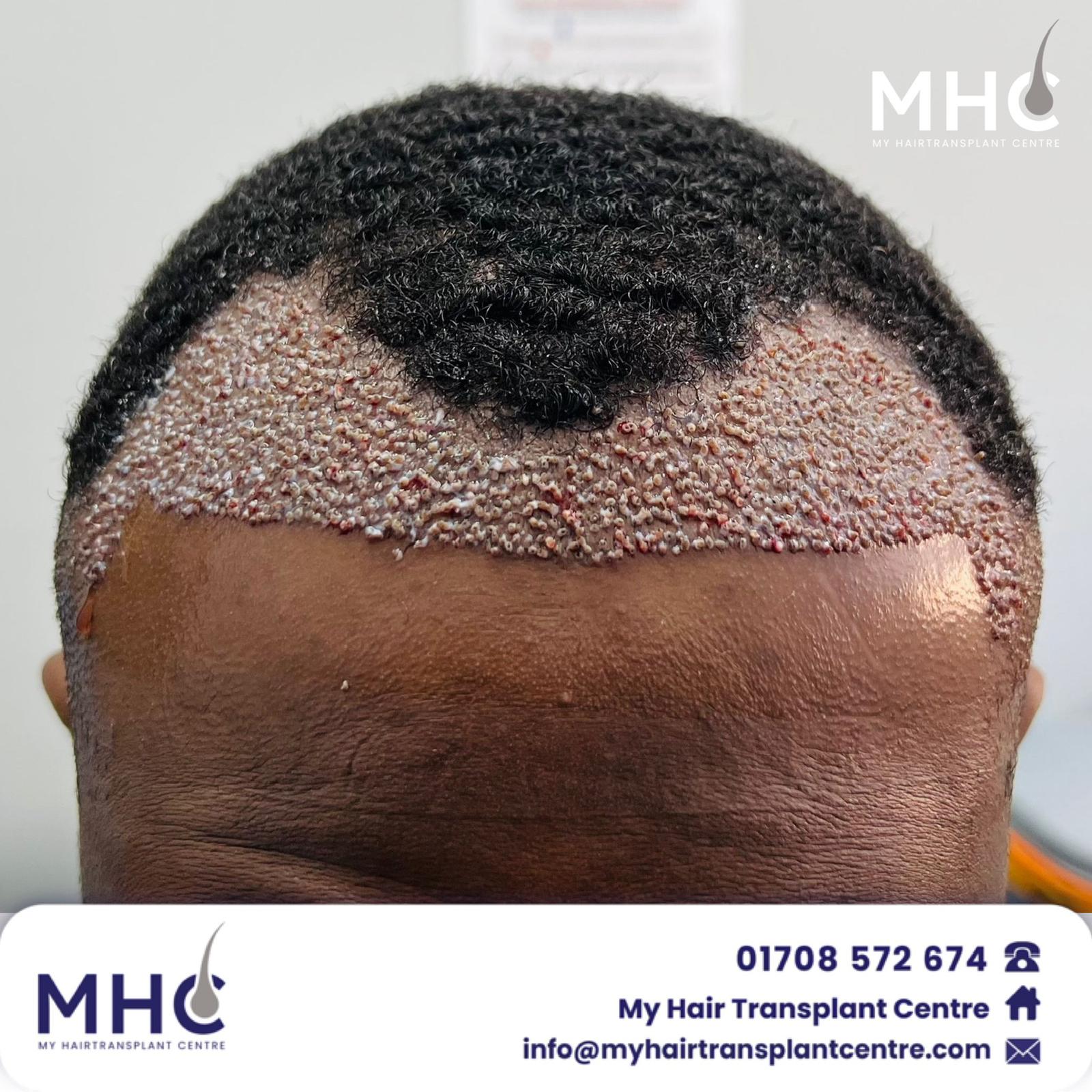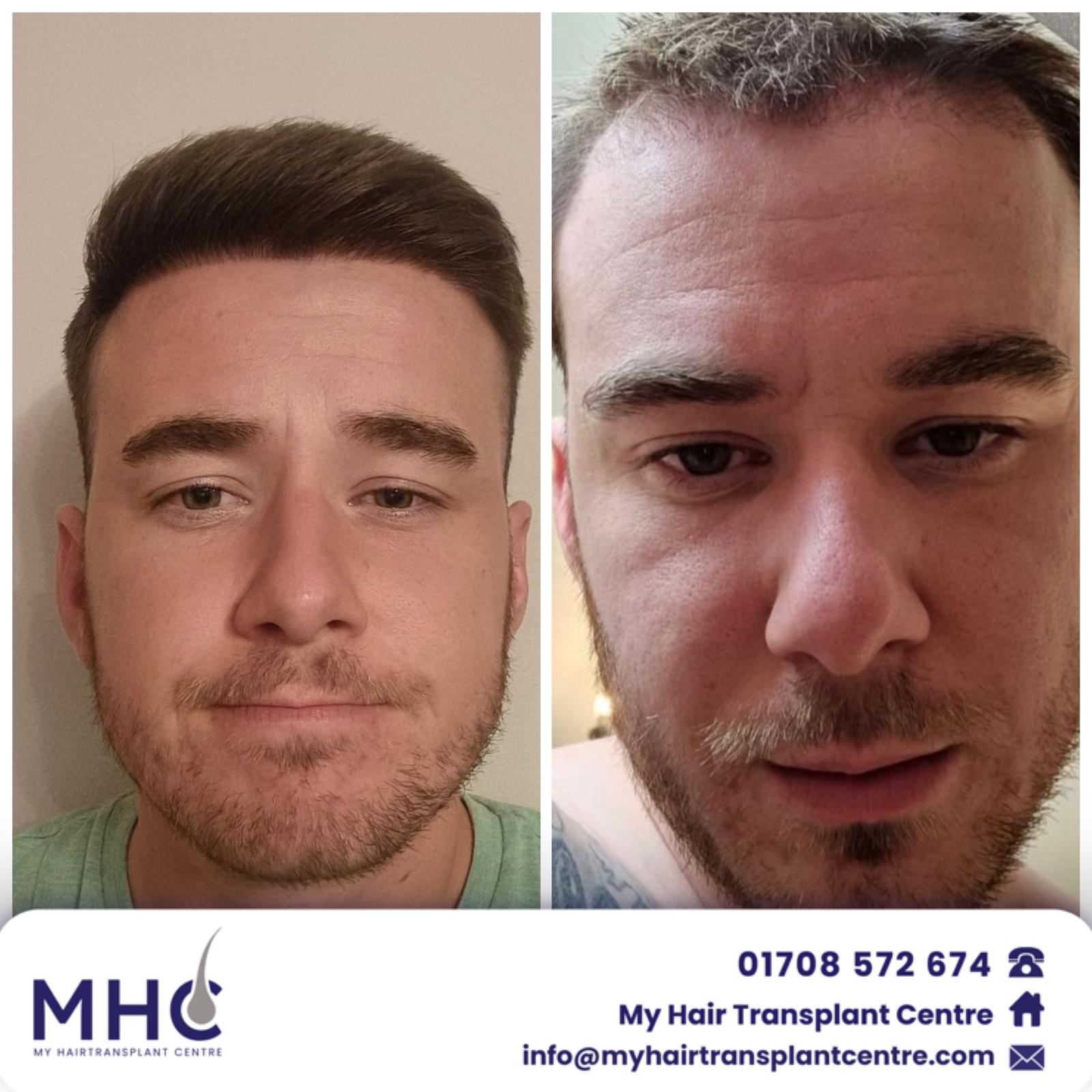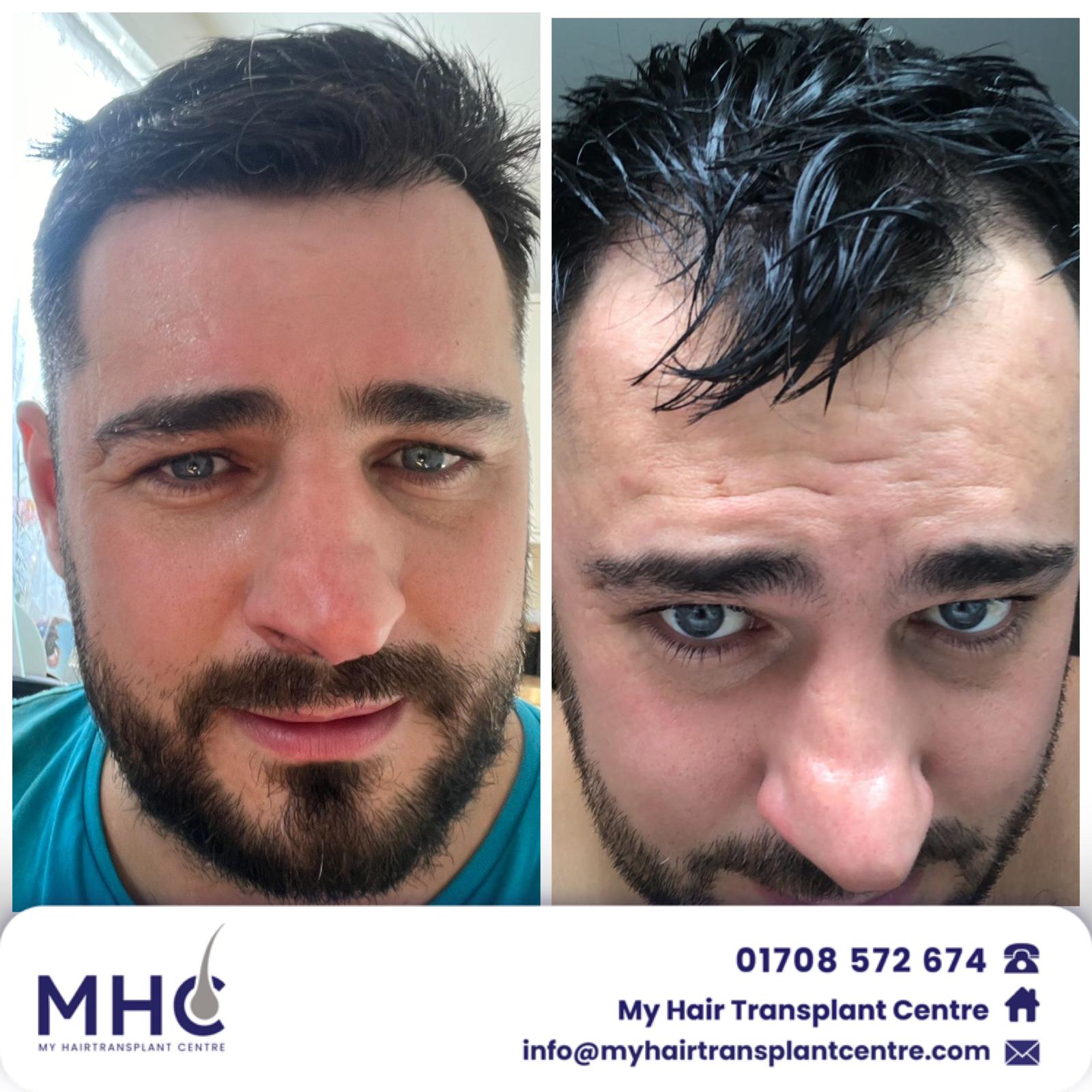
FUE Hair Transplant
FUE (Follicular Unit Extraction) hair transplant is a surgical procedure that is used to restore hair growth in areas where hair is thinning or has been lost. The procedure involves the removal of individual hair follicles from a donor area, usually the back of the head, and transplanting them to the area where hair loss is occurring.
FUE is considered to be a minimally invasive procedure and is performed under local anesthesia. During the procedure, the surgeon will use a small, circular punch tool to remove individual hair follicles from the donor area. These follicles will then be carefully transplanted to the area where hair loss is occurring. The transplanted hair follicles will then begin to grow in their new location, resulting in the restoration of hair growth.
One of the main advantages of FUE hair transplant is that it does not leave a linear scar, as the follicles are removed one at a time. This allows for a more natural-looking result and the ability to wear shorter hairstyles. Additionally, recovery time is shorter than traditional hair transplant methods and the risk of complications is lower.
FUE hair transplant can also be used to restore hair in areas where hair has been lost due to burns, accidents or other types of scarring. It can also be used to restore eyelashes, eyebrows, and beard hair.
FUE hair transplant is a very effective procedure for restoring hair growth, and the results are usually long-lasting. It is important to note that the procedure requires multiple sessions in order to achieve the desired results. It is also important to consult with a qualified and experienced surgeon to ensure that the procedure is performed safely and effectively.
Procedure Involved in an FUE Hair Transplant
FUE (Follicular Unit Extraction) hair transplant is a minimally invasive procedure used to restore hair growth. The procedure involves the removal of individual hair follicles from a donor area, typically the back or sides of the scalp, and transplanting them to a bald or thinning area.
Here’s an overview of the procedure:
- Consultation: During the initial consultation, the surgeon will examine your scalp and hair to determine if you are a suitable candidate for the FUE hair transplant procedure. They will also discuss your goals for the procedure and provide you with an estimate of the number of grafts you will need to achieve the desired results.
- Preparation: Before the procedure, the surgeon will shave the back of your head where the hair will be harvested. This allows for easy access to the hair follicles. They will also administer a local anesthesia to numb the area to minimize discomfort during the procedure.
- Harvesting: The surgeon will use a small, circular punch to remove individual hair follicles from the donor area. The size of the punch will be based on the number of hair follicles in the area and the density of the hair.
- Implantation: Once the hair follicles have been harvested, the surgeon will make small incisions in the recipient area, into which the harvested follicles will be implanted. The incisions are typically made at a slight angle to mimic the natural growth pattern of the hair.
- Recovery: After the procedure, you may experience some swelling and redness in the treated area. The transplanted hair will fall out within the first 2-3 weeks, but new hair should begin to grow within a few months. The final results of the transplant will be visible after 6-12 months.
- Follow-up: The surgeon will schedule follow-up appointments to monitor your progress and provide you with instructions for caring for the transplanted area.
It’s important to note that the recovery time, results and cost of FUE hair transplant vary from person to person. It’s important to consult with a qualified and experienced surgeon to discuss the best options for you.
How to Prepare the FUE Hair Transplant?
Preparing for an FUE (Follicular Unit Extraction) hair transplant procedure is an important step to ensure the best possible results. Here are some things you should do to prepare for the procedure:

- Consult with a qualified and experienced hair transplant surgeon to determine if you are a suitable candidate for the procedure.
- Stop smoking and limit alcohol consumption at least two weeks before the procedure, as they can slow down the healing process.
- Avoid taking certain medications, such as blood thinners and anti-inflammatory drugs, as they can also slow down the healing process.
- Arrange for someone to drive you to and from the procedure, as the anesthesia used during the procedure can make you feel groggy and disoriented.
- Plan for time off work and other activities, as you will need to rest for at least a few days after the procedure.
- If you have a long hair, it should be cut short before the procedure so the surgeon will have easy access to the hair follicles.
- Be sure to discuss any concerns or questions you have with your surgeon before the procedure.
- It is also important to follow any additional instructions your surgeon may give you before the procedure.
By following these guidelines, you can help ensure that your FUE hair transplant procedure is as safe and successful as possible.
What to Expect After an FUE Hair Transplant?
After an FUE (Follicular Unit Extraction) hair transplant procedure, you can expect the following:
- Initial Swelling: Some swelling around the forehead and back of the head is normal after the procedure. The swelling usually subsides within a few days.
- Scalp Redness: The scalp may be red and slightly tender immediately after the procedure, but this usually subsides within a few days.
- Crusting: Some scabbing or crusting on the scalp may occur, especially around the transplanted hair follicles. This is normal and usually subsides within 7-10 days.
- Strict Aftercare: You will need to follow strict aftercare instructions to ensure proper healing. This will include avoiding strenuous activities, keeping the transplanted area clean, and avoiding exposure to sun and wind.
- Pain and Discomfort: You may experience some pain and discomfort in the first few days following the procedure. Your surgeon will provide you with pain medication to help manage this.
- No hair washing: You should avoid washing your hair for the first few days after the procedure.
- No heavy lifting: It’s recommended to avoid any heavy lifting or strenuous activities for at least a week after the procedure.
- No smoking: Smoking is strictly prohibited for a few days after the procedure as it can affect the healing process.
- Gradual Hair Growth: It will take several months for the transplanted hair to grow. You will notice initial hair shedding in the first few weeks following the procedure, but new hair growth will start to appear within 3-4 months.
It’s important to follow all aftercare instructions provided by your surgeon to ensure proper healing and the best possible results. And you should have a follow-up with your surgeon to check on your progress, and to discuss any concerns or questions you may have.
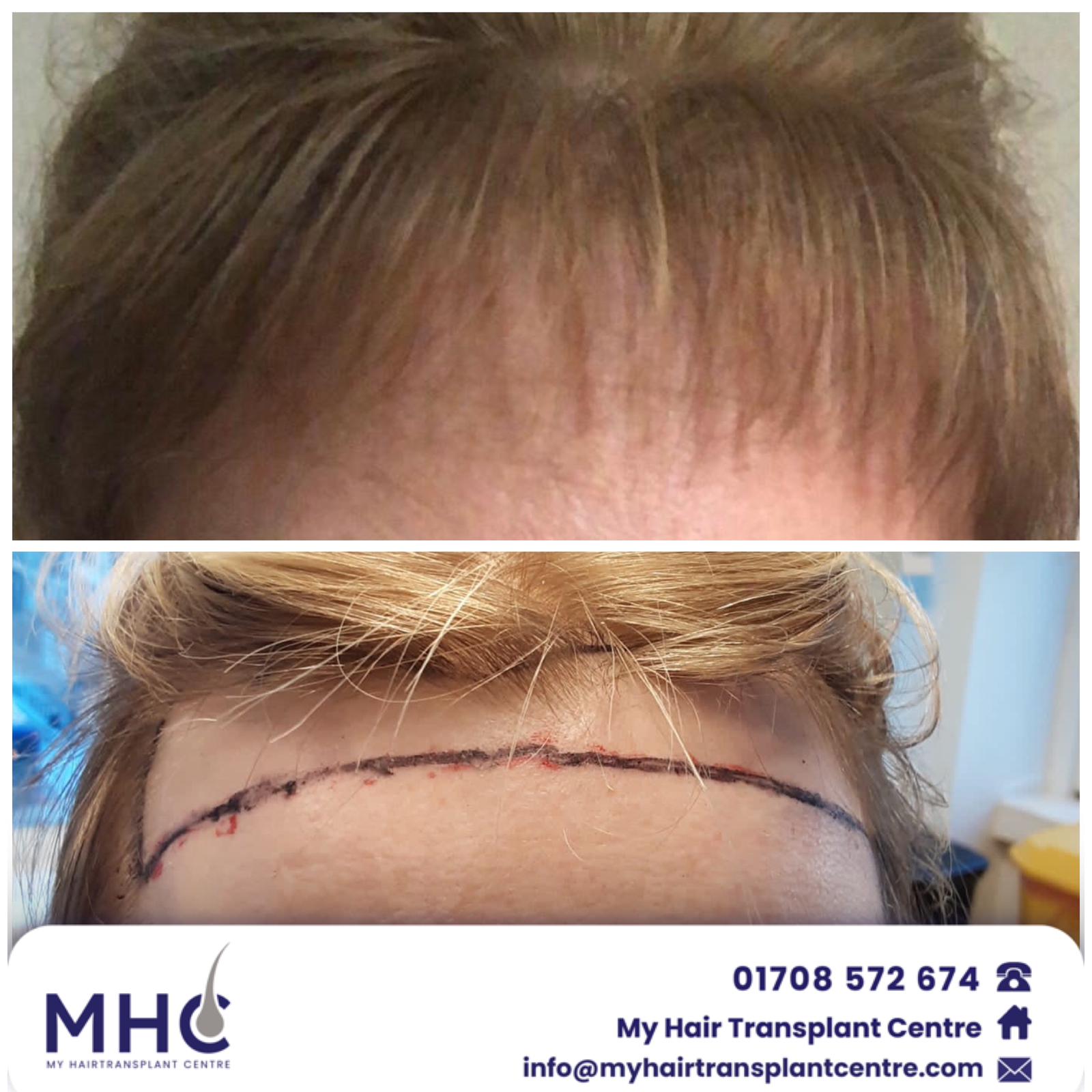
How to Take Care of the Scalp after the Hair Transplant?
To take care of the scalp after a hair transplant, it's important to follow these steps:
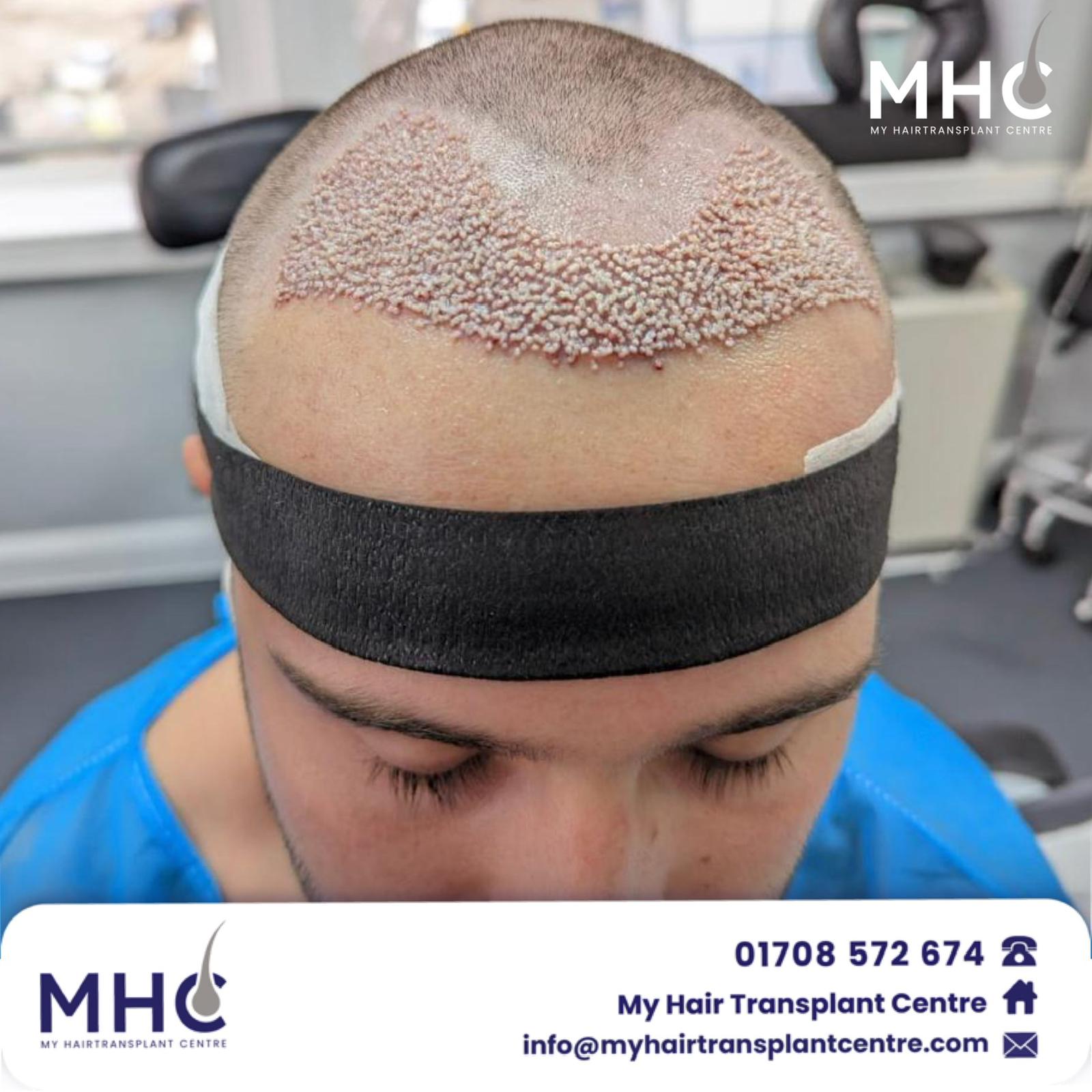
- Keep the scalp clean: Gently wash the scalp with a mild shampoo the day after the procedure. Avoid using hot water and do not scratch or rub the transplanted area.
- Avoid sun and wind exposure: Keep the transplanted area covered and avoid sun and wind exposure for at least the first week after the procedure.
- Avoid strenuous activities: Avoid strenuous activities such as heavy lifting, sports or any activity that can cause sweating for at least a week after the procedure.
- Avoid smoking: Smoking is strictly prohibited for a few days after the procedure as it can affect the healing process.
- Take medication: If you’ve been prescribed any medication such as painkillers or antibiotics, make sure to take them as directed.
- Apply ointment: If your surgeon has prescribed an ointment, you should apply it to the transplanted area as directed.
- Sleep in an upright position: Sleep in an upright position, with your head elevated, to reduce swelling and discomfort.
- Follow-up visits: Keep your follow-up visits with your surgeon as scheduled to check on your progress and to discuss any concerns you may have.
- Follow the aftercare instructions: It’s important to follow all aftercare instructions provided by your surgeon in order to ensure proper healing and the best possible results.
- Do not use hair-styling products: Avoid using hair-styling products such as gels, sprays, or hair color for at least one month after the procedure.
Are There Any Risks Or Side Effects Associated With the FUE Hair Transplant?
Yes, there are risks and side effects associated with FUE hair transplants, although they are generally considered to be minor. Some common risks and side effects include:
- Infection: The transplanted area can become infected if proper care is not taken after the procedure.
- Scarring: FUE hair transplants use small punches to remove hair follicles, which can result in small scars.
- Swelling: Swelling of the scalp and face is common after the procedure, but it should subside within a week.
- Bruising: Bruising may occur at the donor site, but it will typically resolve within a few days.
- Bleeding: Some bleeding may occur during the procedure, but it is usually minor.
- Numbness: The transplanted area may be numb for a few weeks after the procedure.
- Shock Loss: A condition called shock loss can occur, where the existing hair falls out due to the trauma of the procedure, but this is usually temporary and the hair will grow back.
- Non-Satisfaction: There’s always a small chance of not being satisfied with the results of the procedure.
It’s important to discuss any concerns you have about risks and side effects with your surgeon before the procedure to ensure you understand the potential risks and are comfortable with them.
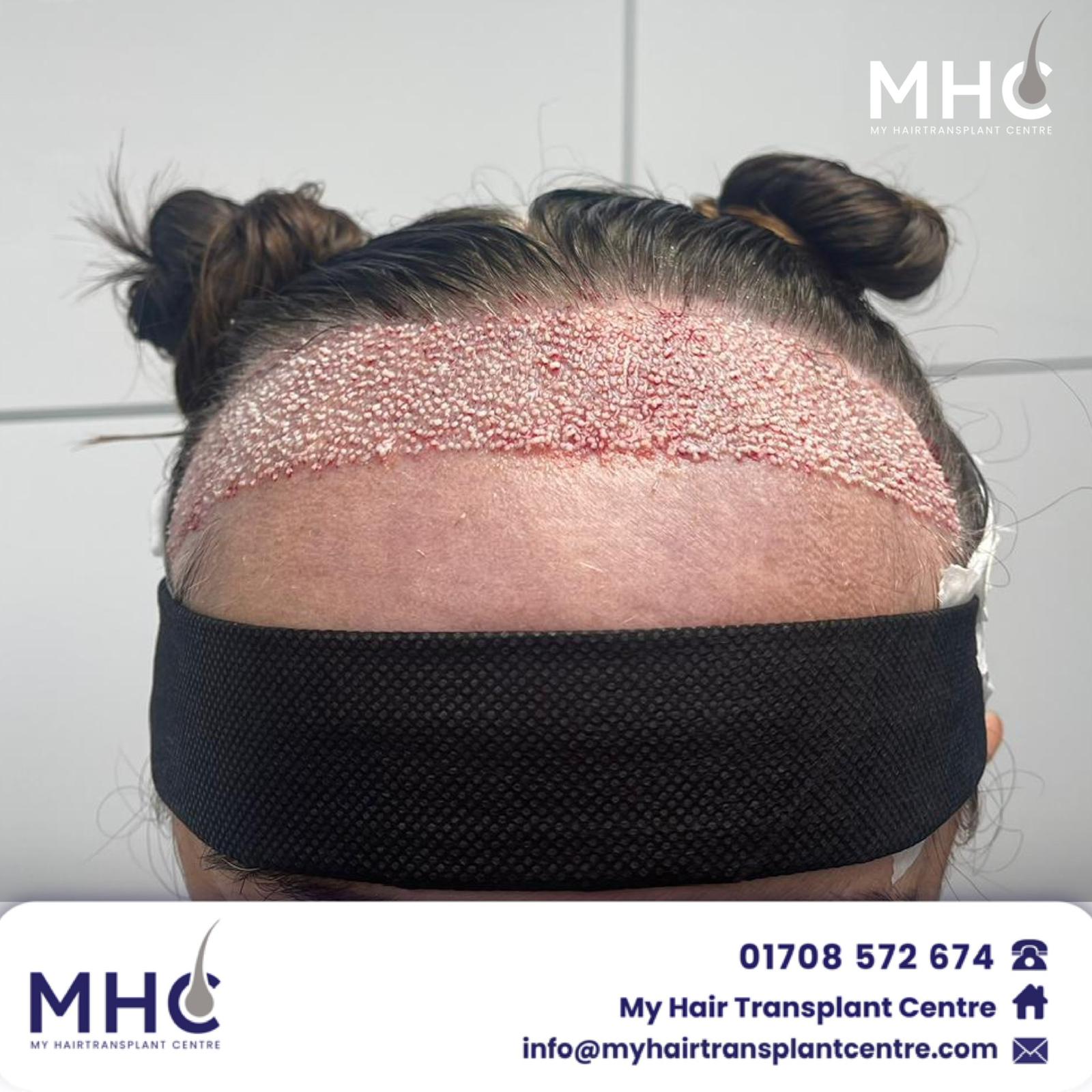
What are the Benefits of FUE Hair Transplantation?
Follicular Unit Extraction (FUE) hair transplantation offers several benefits, including:

- Natural-looking results: FUE transplants use individual hair follicles, which results in a natural-looking hairline and growth.
- Minimal Scarring: Unlike traditional strip transplants, FUE does not leave a linear scar, and the small puncture wounds made by the extraction tool heal quickly, leaving minimal scarring.
- Minimal downtime: FUE is less invasive than other methods, so recovery time is shorter and patients can return to normal activities soon after the procedure.
- No stitches: FUE does not require any stitches, so there’s no risk of stitch-related complications.
- No linear scar: With FUE, there’s no linear scar, so you can wear your hair short if you want.
- Suitable for small sessions: FUE is suitable for small sessions, and you can have multiple sessions over time to achieve your desired results.
- Can be used for body hair transplantation: FUE can also be used for body hair transplantation, such as beard, chest, and pubic hair transplants.
It’s important to note that FUE hair transplant is not recommended for everyone and your surgeon will help you to decide whether it’s the right option for you based on your individual needs and goals.



